
A comet from a far out orbit is visiting our part of the solar system this month. Comet C/2020 F3 (NEOWISE) is a northern hemisphere object and may be seen with the naked eye in the northwest after sunset and in the northeast before sunrise. It sets in late evening and rises in early morning. If you’re far enough north, you may see it up all night. The comet last journeyed this way more than 6,000 years ago. In its current orbit, the comet will take longer to return.
At sunset in July, Leo and Virgo are setting. Boötes and Hercules are high. Aquila and Cygnus are rising. A waxing gibbous moon is on the meridian around sunset as the month starts. Naked eye planet watching begins mid-evening with Saturn and Jupiter rising next to Sagittarius. The full moon passes by them on the 5th.

Mars rises around local midnight to the right of Pisces. The moon at last quarter visits the red planet on the 11th and 12th.
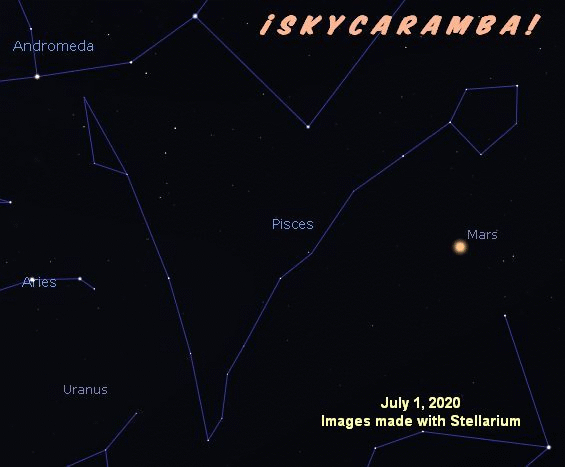
With a dark sky and binoculars or a telescope, you can look for Uranus north of the head of Cetus the whale. You’ll have a better chance when the moon isn’t in the sky. Before about the 10th and after the 19th will be good viewing periods. Of course, if you have really good vision, you can see Uranus with the naked eye.
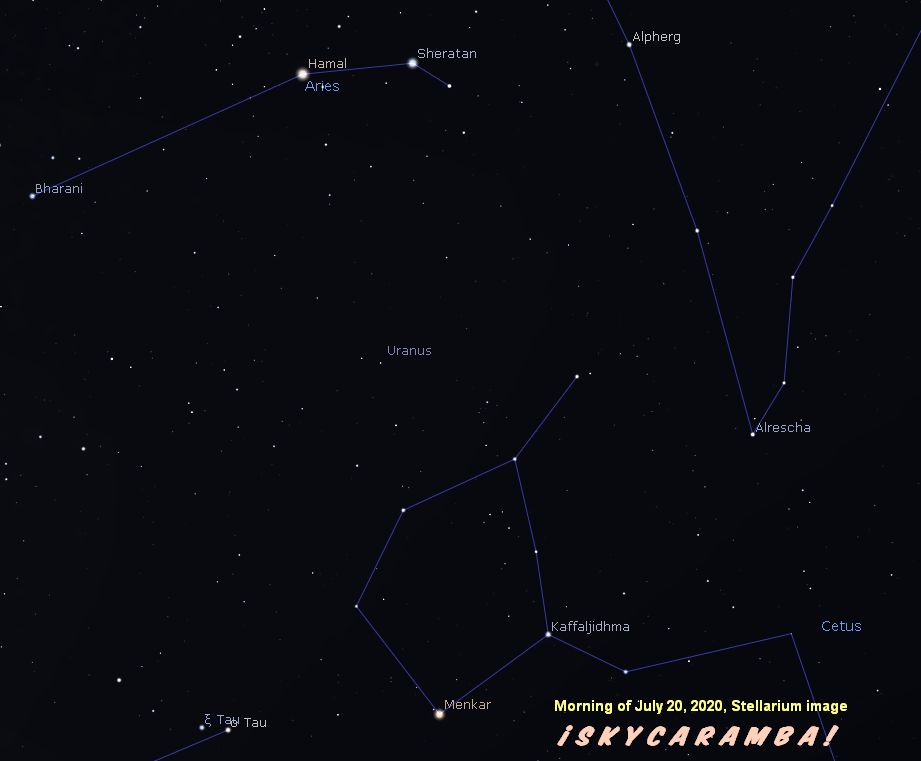
Venus is a mid-morning riser moving through Taurus. The planet is moving through the V-shaped asterism called the Hyades and is closest to orange Aldebaran on the 12th. A waning crescent moon will be left of it on the morning of the 17th.
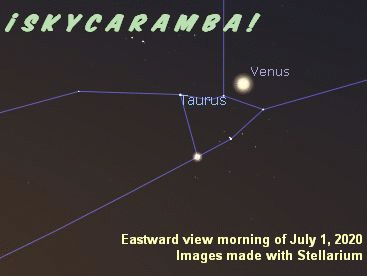
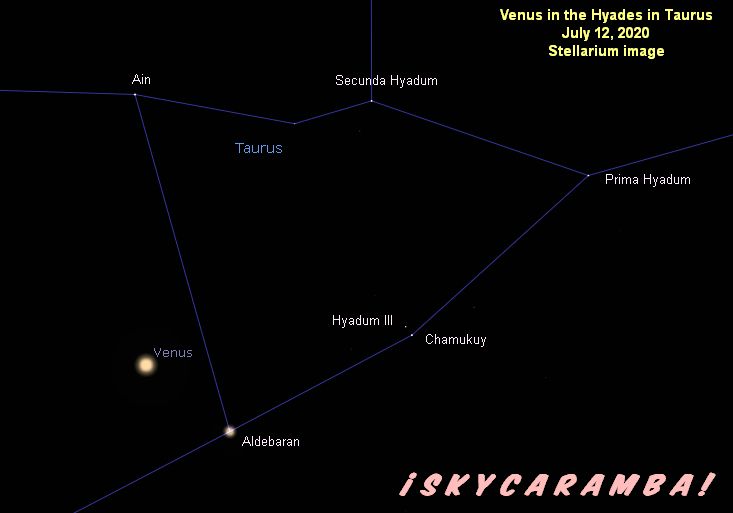
Mercury is a morning object in Gemini, visible in the second half of the month. The moon, even thinner than when it passed by Venus, passes left of Mercury on the 19th. Mercury continues passing through the twins constellation through the end of the month. On the way, it’s at greatest elongation in the morning sky 20.1° west of the sun.
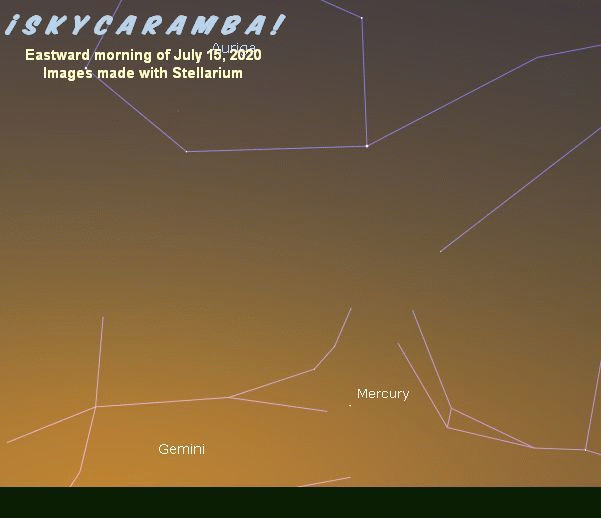
By the end of July, Orion has emerged as a morning constellation.
Earth is at aphelion on the 4th. It’s 1.017 times its average 92.9 million miles (148.7 km) from the sun. Venus is at aphelion on the 10th. It’s 0.728 astronomical units from the sun.
The moon’s circumstances this month:
Full moon on the 5th. Last quarter on the 12th. New moon on the 20th. First quarter on the 27th.
Southern lunistice on the 5th. Northward crossing on the 12th. Northern lunistice on the 19th. Southward crossing on the 25th.
Apogee on the 12th at 404,200 km or 251,200 mi. Perigee on the 25th at 368,500 km or 229,000 mi.

A penumbral lunar eclipse occurs on the 5th. It begins at 03:07 UT. The maximum eclipse is at 04:30. It ends at 05:52. Visibility for the entire event is from Antarctica, part of the Pacific, most of the Americas, the Atlantic and westernmost parts of Africa. For most of Africa and western Europe, the event happens during moonset. For the northwestern U.S. and western Canada, it’s a moonrise eclipse. In a penumbral eclipse, the moon passes through the outer part of Earth’s shadow. Careful observers will see it darken and then brighten up again.
Notable conjunctions this month:
2nd – Moon & Antares, 6.3d.
5th – Moon & Jupiter, 1.9d.
6th – Moon & Saturn, 2.5d.
10th – Moon & Neptune, 4.1d.
11th – Moon & Mars, 1.8d.
12th – Venus & Aldebaran, 1.0d.
14th – Moon & Uranus, 3.5d.
17th – Moon & Aldebaran, 3.7d.
17th – Moon & Venus, 3.0d.
19th – Moon & Mercury, 3.9d.
20th – Moon & Pollux, 4.5d.
22nd – Moon & Regulus, 4.1d.
26th – Moon & Spica, 6.7d.
30th – Moon & Antares, 6.2d.
